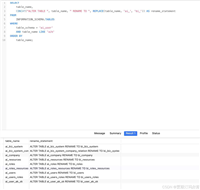引言
在数据库优化中,索引(index)是最常用的性能优化手段之一。正确的索引可以大幅提升查询速度,而不合理的索引则可能导致写入性能下降、存储空间浪费,甚至影响查询效率。
本文将深入探讨:
- 何时应该加索引?
- 何时不需要加索引?
- 如何评估索引的使用情况?
- 最佳实践和常见误区
并提供实际的sql示例和优化建议,帮助开发者更科学地设计数据库索引。
1. 索引的作用与原理
1.1 什么是索引
索引类似于书籍的目录,它可以帮助数据库引擎快速定位数据,而不必逐行扫描整个表。mysql支持多种索引类型,包括:
- b-tree索引(默认,适用于等值查询和范围查询)
- hash索引(仅适用于等值查询,memory引擎支持)
- 全文索引(fulltext,适用于文本搜索)
- 空间索引(spatial,适用于地理数据)
1.2 索引的优缺点
| 优点 | 缺点 |
|---|---|
| 加速查询(select) | 降低写入速度(insert/update/delete) |
| 优化join、order by、group by | 占用额外存储空间 |
| 减少全表扫描 | 维护索引需要额外计算资源 |
2. 何时应该加索引
2.1 高频查询条件
如果某列经常出现在where子句中,应该考虑加索引:
-- 未优化(全表扫描) select from users where username = 'alice'; -- 优化(添加索引) alter table users add index idx_username (username); explain select from users where username = 'alice'; -- 检查是否使用索引
2.2 连接操作(join)的字段
外键关联字段通常需要索引:
-- 未优化(可能导致全表扫描) select o. from orders o join customers c on o.customer_id = c.id where c.email = 'alice@example.com'; -- 优化(确保customer_id和email有索引) alter table orders add index idx_customer_id (customer_id); alter table customers add index idx_email (email);
2.3 排序或分组字段
order by、group by、distinct 涉及的列建议加索引:
-- 未优化(可能使用文件排序,性能差) select from products order by price desc; -- 优化(添加索引) alter table products add index idx_price (price);
2.4 高选择性列
选择性高的列(唯一值多)更适合索引:
-- 计算列的选择性(越接近1越好)
select
count(distinct email) / count() as selectivity
from users;
-- 如果结果 > 0.1,通常适合加索引
2.5 大表查询
数据量大的表(如超过10万行)更需要索引:
-- 检查表大小
select
table_name,
table_rows
from information_schema.tables
where table_schema = 'your_database';
3. 何时不需要加索引
3.1 小表
数据量小的表(如配置表)通常不需要索引:
-- 假设config表只有100行,索引收益低 select from config where key = 'timezone';
3.2 低选择性列
只有少量不同值的列(如性别、状态标志)索引效果差:
-- 性别列(只有'm'/'f')索引意义不大 select from users where gender = 'm';
3.3 频繁更新的列
索引会降低写入速度,频繁更新的列需谨慎:
-- 如果last_login_time每秒更新多次,索引可能影响性能 update users set last_login_time = now() where id = 1;
3.4 不用于查询的列
从不用于where、join、order by的列无需索引:
-- 假设description列很少被查询,不需要索引 select from products where name = 'laptop';
4. 如何评估索引的使用情况
4.1 使用explain分析查询
explain select from users where username = 'alice';
重点关注:
- type:all(全表扫描)→ 需要优化
- key:是否使用了索引
- rows:扫描的行数(越少越好)
4.2 监控慢查询日志
-- 查看慢查询日志配置 show variables like 'slow_query_log%'; -- 开启慢查询日志(mysql 5.7+) set global slow_query_log = on; set global long_query_time = 1; -- 超过1秒的查询记录
4.3 检查未使用的索引
-- 查看未使用的索引(mysql 5.6+) select from sys.schema_unused_indexes;
5. 最佳实践与常见误区
5.1 复合索引设计(最左前缀原则)
-- 复合索引 (a, b, c) 能优化: -- where a = 1 and b = 2 -- where a = 1 -- 但不能优化 where b = 2 或 where c = 3 alter table orders add index idx_status_created (status, created_at);
5.2 避免过度索引
-- 过多的索引会影响写入性能 show index from users; -- 检查索引数量
5.3 覆盖索引优化
-- 如果索引包含所有查询字段,可避免回表 alter table products add index idx_name_price (name, price); select name, price from products where name like 'apple%'; -- 使用覆盖索引
5.4 定期优化索引
-- 重建索引(innodb) alter table users engine=innodb; -- 或使用optimize table(适用于myisam) optimize table users;
6. 总结
| 场景 | 是否加索引? | 优化建议 |
|---|---|---|
| 高频where查询 | ✅ 推荐 | 使用b-tree索引 |
| join关联字段 | ✅ 推荐 | 确保外键有索引 |
| order by/group by | ✅ 推荐 | 复合索引优化排序 |
| 低选择性列(如性别) | ❌ 不推荐 | 考虑其他优化方式 |
| 小表(<1000行) | ❌ 不推荐 | 全表扫描更快 |
| 频繁更新的列 | ⚠️ 谨慎 | 权衡读写性能 |
最终建议:
- 先分析查询模式,再决定加索引
- 使用explain和慢查询日志 定位问题
- 避免盲目加索引,定期清理无用索引
到此这篇关于mysql索引优化指南之如何科学为数据表添加索引的文章就介绍到这了,更多相关mysql数据表添加索引内容请搜索代码网以前的文章或继续浏览下面的相关文章希望大家以后多多支持代码网!






发表评论